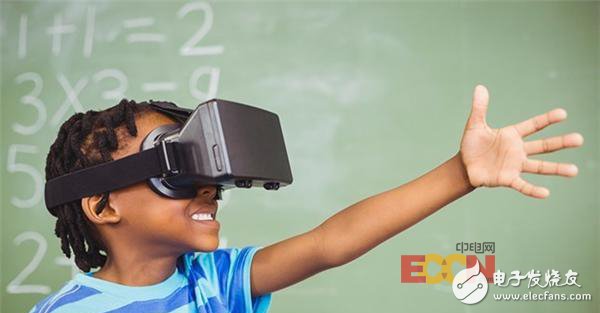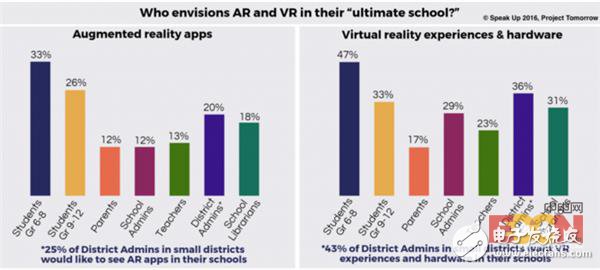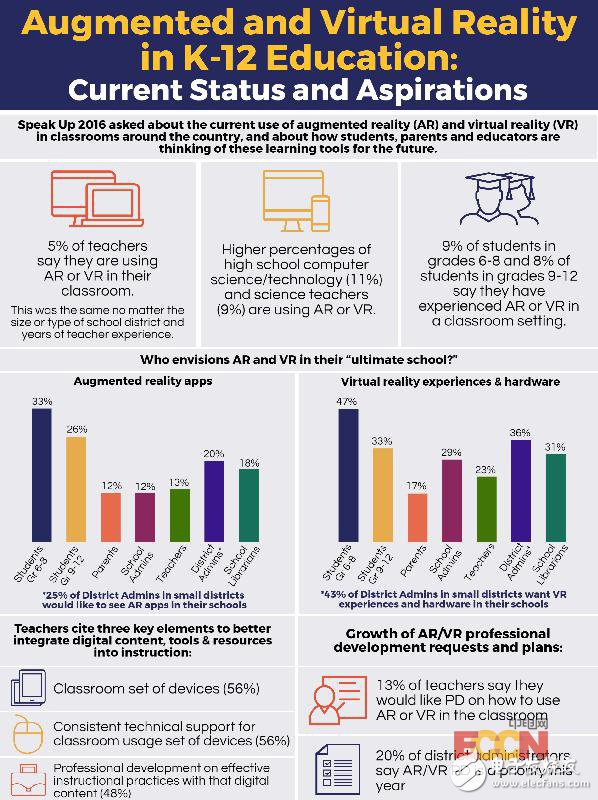In the K12 classroom, AR augmented reality technology and VR virtual reality technology are still in the experimental application stage. Not long ago, Project Tomorrow published an evaluation report for a VR application project in San Diego to explore how the AR Augmented Reality technology environment enhances students' learning and learning interests in the STEAM field. San Diego has a high school on the second floor of the library, providing natural conditions for conducting AR augmented reality pilot projects and encouraging and promoting STEAM learning. The high school project is called STEAMing Ahead with Mobile Learning and was developed by the San Diego Public Library Foundation, the San Diego Public Library, and E3 Public High School in collaboration with Qualcomm Wireless Reach. Project Tomorrow was commissioned to investigate the relationship between the augmented reality app and student learning outcomes. Considering that today's students are more interested in situational learning, the STEAMing Ahead with Mobile Learning program plans to take advantage of the unique structure of the library dome to bring a rich learning experience to the ninth grade students. With the support of Qualcomm technology, this project utilizes mobile context-aware technology to give full play to the advantages of AR augmented reality, creating a virtual context related to science, mathematics, mechanics and art within the library, allowing students and digital information to be Effective interaction. Before the construction team started construction, the AR augmented reality technology was used to conceive the house's pattern. When students learn the STEAM concept in the library situation, they can get the new construction knowledge of the library. A survey by Project Tomorrow found that: Most students believe that using 4G tablets in an AR augmented reality environment can enhance their enthusiasm and participate in learning about the central library hemispherical buildings; Students attribute their progress to the rich learning experience of mobile AR augmented reality. In the process, they found that learning is more interesting, their ability to collaborate has improved, and their interest in hemispherical structures and architecture has increased; After a period of learning experience, 10% of students said they are more interested in the STEAM field; The teachers involved in the project believe that if they are closely integrated with the syllabus, the environment created by AR Augmented Reality can be successfully applied in more academic fields, thereby enhancing the learning effect of students. Speak Up is committed to investigating the use of AR augmented reality and VR virtual reality technology in Chilean classrooms, as well as the views of students, parents and educators on the future of these educational technologies. This project in San Diego raised new issues in Speak Up in 2016 and sparked attention. (Some of the data has been published in this month's THE magazine.) The current application of AR augmented reality and VR virtual reality in the classroom: 5% of teachers said they would use AR and VR technology in the classroom. This feedback is the same regardless of the size, type of school district, and the teacher of any teaching experience. Moreover, in the computer science/technology and science classrooms of middle schools, the proportion of teachers using AR and VR technology will be higher, reaching 11% and 9% respectively; In the sixth to eighth grades, 9% of students experienced AR augmented reality and VR virtual reality technology in the classroom. In the 9th to 12th grades, the ratio of VR to AR technology was 8%. In the chart below, students are obviously looking forward to the application of AR and VR in their basic education stage than parents and teachers. It is worth mentioning that the school librarian and school district administrators are more interested in AR and VR technologies, especially in smaller school districts (with a scale of more than 5,000 students). When asked what elements are needed in the process of applying digital content, tools and resources, these teachers list three key elements: Classroom equipment (56%); Continuous technical support for the classroom (49%); Efficient use of digital content and professional skills (48%) Therefore, it is not difficult to understand why when it comes to the application of AR and VR in the classroom, teachers begin to seek more professional support and promote personal development. In the survey, about 13% of teachers said they would like to learn how to apply the expertise of AR and VR technology in the classroom. The school level also recognizes the importance of this issue. Twenty percent of school administrators believe that teachers' expertise in using AR and VR technology in the classroom is the top priority this year. In the final part of the STEAMing Ahead with Mobile Learning project survey, Project Tomorrow concludes, “In order to stimulate and develop students' interest in STEAM, their learning process should be consistent with the content and uniqueness of STEAM.†In other words, students need to learn a lot. Technologies related to AR and VR, such as how to use 4G wireless connection, how to apply AR technology, and so on. At the same time, schools and teachers should also provide students with the opportunity to gain more knowledge about VR and AR to help them stimulate their hidden interests. 18V Dc Adapter,18V 3A Ac Dc Adapter,18V Dc Adapter 3000Ma,Ac/Dc Adapter 18V 3A ShenZhen Yinghuiyuan Electronics Co.,Ltd , https://www.yhypoweradapter.com


